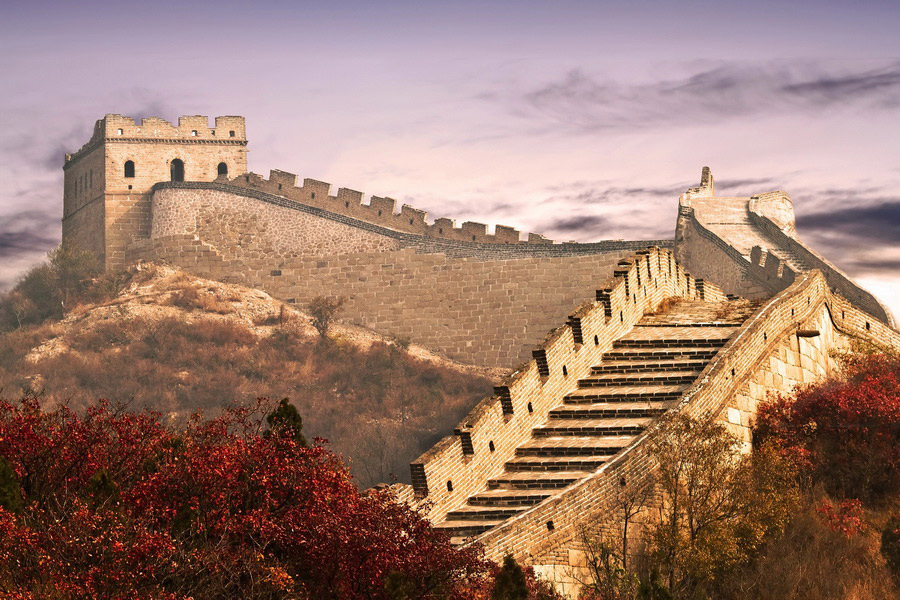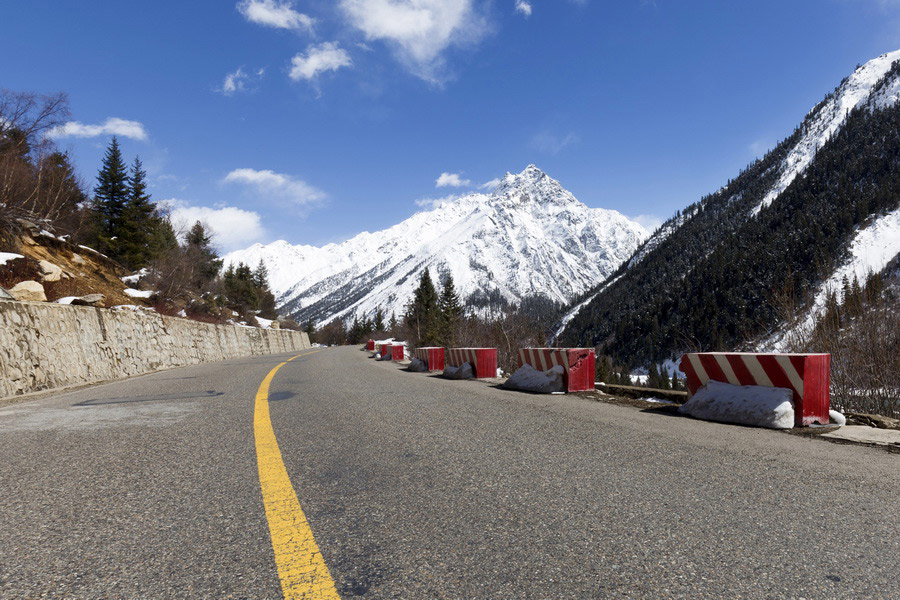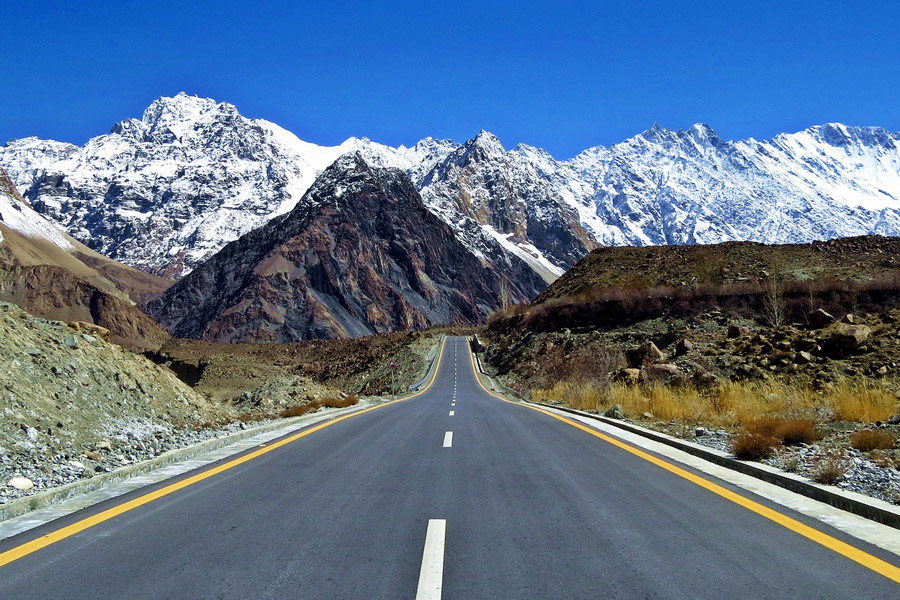
China receives a significant number of international visitors each year. To protect regions of geographic, ecological, or strategic importance, certain areas follow specific travel protocols that may require a China travel permit for restricted areas. Understanding these regulations helps travellers plan an efficient and well-structured journey through the country.
To enter some destinations in the Tibet Autonomous Region, foreign travellers must obtain special approval. These restricted areas include the Yarlung Tsangpo Grand Canyon, Motuo County, the Nanyi Valley, and Nyingchi’s Niyang Valley. In Xinjiang, access is limited in several locations, such as Khorgos Port and sections of the Duku Highway, which also require a Xinjiang travel permit for restricted areas.
Indian citizens planning to visit Mount Kailash must follow official government arrangements, while all foreign nationals are required to obtain the appropriate permit and follow authorised routes.
Why You Might Need a Travel Permit in China
The travel permit system in China regulates access to restricted areas for reasons that include national security, border control requirements, environmental protection, and the preservation of culturally sensitive regions. These measures are particularly relevant in locations such as Tibet and Xinjiang, where specific administrative rules apply to foreign travellers.
- Administrative regulations – Certain parts of China are governed by special policies that require visitors to hold a valid travel permit for restricted areas. These regulations help authorities manage entry procedures and ensure compliance with local requirements.
- Security protocols – Access to areas of strategic or border-related importance is tightly controlled. Travel permits help regulate movement in these regions and support a stable environment for both residents and visitors.
- Environmental protection – Some destinations contain fragile ecosystems. Travel permits limit visitor numbers and reduce the ecological impact on sensitive natural landscapes.
- Cultural preservation – In communities with distinct cultural or spiritual traditions, travel permits support measures designed to protect local heritage and maintain appropriate visitor conduct.
Please refer to our detailed guide for comprehensive information on obtaining a Tibet Travel Permit, Xinjiang Travel Permit, or authorisation for other restricted areas in China.
How to Get a China Travel Permit for Restricted Areas?
Access to certain restricted areas in China requires a clear understanding of the official application procedures. In addition to a valid Chinese visa, travellers may need to obtain a China travel permit for restricted areas. For regions such as Tibet and designated border zones, the permit must be arranged through a licensed tour operator, as independent applications are not accepted.
Processing times vary by permit type and destination, ranging from several days to several weeks. For effective planning, travellers are advised to begin the application process at least one month in advance. It is also important to carry the required documents during the trip to ensure smooth verification at checkpoints.
How to Obtain a Tibet Travel Permit?

The Tibetan Plateau includes culturally significant sites, historic monasteries, and high-altitude landscapes that are subject to specific travel regulations. Foreign visitors must follow established requirements when planning a trip to this region, particularly in areas designated as restricted.
To enter the Tibet Autonomous Region, all foreign travellers are required to obtain a Tibet Travel Permit. This travel permit is mandatory for entry and must be arranged through a licensed Tibetan tour operator before the journey begins.
What Permits Are Required to Visit Tibet?

Planning a journey to the Tibet Autonomous Region (TAR) involves obtaining the appropriate authorisations based on your selected destinations.
- The principal document is the Tibet Travel Permit (TTP), also referred to as the “Tibet Entry Permit”. It takes at least 8 business days to process at the Tibet Tourism Bureau in Lhasa. The permit covers major destinations such as Lhasa, Shigatse, and Gyantse. Authorised Tibet travel agencies will arrange this document on your behalf before departure.
- Locations beyond Lhasa and Nagqu require an additional Alien’s Travel Permit. These areas include Mount Kailash, Lake Manasarovar, Samye Monastery (Tsedang), and Mount Everest (Shigatse). The Public Security Bureau processes this permit in 1–2 hours, and an accredited travel agency in Tibet will handle the application for you.
- For foreign travellers and Taiwanese citizens planning to visit select military-controlled areas, including Ngari, Nyingchi, Tsomei (also known as Comai or Cuomei), or parts of Chamdo, a Military Area Travel Permit must be obtained through the military affairs office in Lhasa. Visitors entering Tibet overland from Sichuan also need this document. As processing may take 15 to 30 business days, early preparation is advisable.
- The Frontier Pass, also known as the Border Permit, is another required document in the border regions of the Tibet Autonomous Region, such as Mount Everest, Gyirong, and Ngari Prefecture. Issued by the Tibet Armed Police Border Corps in Lhasa, the pass is obtained exclusively through a registered Tibetan travel agency and is typically processed within one working day. Mainland Chinese travellers may also apply through their local Public Security Bureau or upon arrival in Tibet.
- Those who wish to climb Mt Everest from Tibet must obtain a Tibet Climbing Permit, also called the Mountaineering Licence. Joining an organised climbing team is essential, and the processing time for this document is 2–3 months.
Who Are the Travel Permits For?
The Tibet Travel Permit (TTP) is a mandatory document for all foreign travellers entering the region. This requirement applies to international tourists, overseas Chinese who do not hold a Chinese ID card, and citizens of Taiwan.
The Frontier Pass, also known as the Border Permit, is required for all travellers visiting designated border regions within Tibet. This includes residents of Mainland China, Hong Kong, Macau, and Taiwan. Holders of a valid Home Return Permit (Mandarin: 回乡证, Pinyin: huí xiāng zhèng) may enter Tibet without a TTP, but they must still obtain the Frontier Pass when travelling to restricted border areas.
Pilgrimage to Mount Kailash and Lake Mansarovar
The Kailash Mansarovar Yatra is regarded as one of the most significant pilgrimages in Asia. Revered in Hinduism, Jainism, and Buddhism, the route leads to Mount Kailash, considered the abode of Lord Shiva, the site where the first Jain Tirthankara Adinath attained enlightenment, and a place of longstanding importance in Buddhist tradition. Nearby lie Lake Mansarovar and Rakshas Tal, both central to the region’s religious heritage.
For holders of an Indian passport, travel to this area is subject to special arrangements coordinated by the governments of China and India. Indian pilgrims must participate in an officially organised group and obtain both the required group authorisation and the Tibet Travel Permit for the approved route. These documents remain valid only for the duration of the journey and for the specific locations listed in the itinerary.
How to Apply for a Tibet Travel Permit?
Understanding the Tibet Travel Permit application process is essential for planning a compliant trip to the region. The steps below outline the official procedure used by licensed travel agencies when applying on behalf of foreign visitors.
Step 1: Contact a licensed travel operator.
Begin by reaching out to a licensed travel agency that specialises in tours to Tibet. Only an authorised operator can apply for the Tibet Travel Permit, as independent submissions by travellers are not accepted.
Step 2: Submit relevant documents.
Once your itinerary is confirmed, provide the required documents to your Tibetan tour operator. In most cases, this includes a clear copy of your passport’s information page and a copy of your valid Chinese visa, where applicable.
Step 3: Wait for permit approval.
After the operator submits your application, wait for the permit to be issued. Once approved, the original document will be delivered to you before departure, allowing you to travel to Tibet in accordance with the authorised route and entry point.
Required Documents for Tibet Travel
To apply for the permits required for restricted areas in Tibet, travellers must provide the following documents.
- A copy of the passport photo page, valid for at least six months beyond the arrival date.
- A copy of a valid Chinese visa, where applicable.
- For holders of Business visas, stamped proof of employment in Mandarin from the company or employer in China is required. This letter should state the traveller’s name, passport number, position, and the company address.
- For visitors entering China on private or family visas, an invitation letter from relatives, along with the inviter’s passport information, will be necessary.
- A confirmed tour itinerary that specifies the regions to be visited and the corresponding dates.
- Travellers will also be asked to indicate their planned entry and departure points, as this information is recorded on the Tibet Travel Permit. In addition, applicants may be required to provide details of their current or previous occupation.
The local Tibet travel agency will coordinate with the relevant authorities, such as the Tibet Tourism Bureau (TTB) or the Public Security Bureau (PSB), to obtain the necessary documents on the traveller’s behalf.
Entry Protocols and Route Limitations in Tibet
Travel plans must comply with the requirements of the Tibet Travel Permit. Travellers are required to follow the entry and departure points stated in their documentation, and movement within the Tibet Autonomous Region must remain consistent with the officially approved itinerary.
For example, if the permit lists Xi’an as the designated entry point, all travel to and from Tibet must be arranged through that city in accordance with the authorised route.
How Can I Get to Lhasa – the Administrative Capital of Tibet?
By train

The Qinghai–Tibet Railway offers scheduled train services to Lhasa from major cities across mainland China. Xining serves as the principal departure point for most routes, while additional services operate from cities such as Beijing, Shanghai, and Xi’an. Travellers can reach the region via one of the following trains:
| Departure City | Intermediate Stations by Destination | Train № | Return Train № | Price Range in Chinese Yuan (Renminbi) |
| Beijing (Beijing West) | Shijiazhuang North, Taiyuan, Zhongwei, Lanzhou, Xining, Golmud, and Nagqu | Z21 - Beijing-Lhasa | Z22 - Lhasa-Beijing | ¥360 - ¥1144 |
| Chengdu (Chengdu West) | Suzhou, Wuxi, Nanjing, Bengbu, Xuzhou, Zhengzhou, Luoyang, Xi’an, Xiangyang, Baoji, Lanzhou, Xining, Golmud, Amdo, and Nagqu | Z322 - Chengdu-Lhasa | Z324 - Lhasa-Chengdu | ¥302.5 - ¥997.5 |
| Chongqing (Chongqing West) | Nanchong North, Guangyuan, Lanzhou, Xining, Delingha, and Golmud | Z223 - Chongqing-Lhasa | Z224 - Lhasa-Chongqing | ¥302.5 - ¥997.5 |
| Guangzhou | Chenzhou, Changsha, Wuchang, Zhengzhou, Luoyang, Xi’an, Baoji, Lanzhou, Xining, Delingha, Golmud, Amdo, and Nagqu | Z264 - Guangzhou-Lhasa | Z266 - Lhasa-Guangzhou | ¥447 - ¥1468 |
| Lanzhou |
Xining, Deingha, and Golmud | Z322 - Chengdu-Lhasa; Z223 - Chongqing-Lhasa |
Z324 - Lhasa-Chengdu; Z224 - Lhasa-Chongqing |
¥240 - ¥823 |
| Xining, Delingha, Golmud, and Nagqu | Z21 - Beijing-Lhasa | Z22 - Lhasa-Beijing | ||
| Xining, Delingha, Golmud, Amdo, and Nagqu | Z265 - Guangzhou-Lhasa | Z266 - Lhasa-Guangzhou | ||
| Xining, Golmud, Amdo, and Nagqu | Z165 - Shanghai-Lhasa | Z166 - Lhasa-Shanghai | ||
| Xining, Telingha, Golmud, and Nagqu | Z917 - Lanzhou-Lhasa | Z918 - Lhasa-Lanzhou | ||
| Shanghai | Suzhou, Wuxi, Nanjing, Bengbu, Xuzhou, Zhengzhou, Luoyang, Xi’an, Xianyang, Baoji, Lanzhou, Xining, Golmud, Amdo, and Nagqu | Z164 - Shanghai-Lhasa | Z166 - Lhasa-Shanghai | ¥402.5 - ¥1262.5 |
| Xi’an |
Baoji, Lanzhou, Xining, Delingha, Golmud, Amdo, and Nagqu | Z265 - Guangzhou-Lhasa | Z266 - Lhasa-Guangzhou | ¥293.5 - ¥986.5 |
| Xianyang, Baoji, Lanzhou, Xining, Golmud, Amdo, and Nagqu | Z165 - Shanghai-Lhasa | Z166 - Lhasa-Shanghai | ||
| Xining |
Delingha, Golmud, and Nagqu | Z8981 - Xining-Lhasa | ¥224 - ¥781 | |
| Golmud, Tuotuohe, Amdo, and Nagqu | Z8991 - Xining-Lhasa | Z8992 - Lhasa-Xining |
Note: Due to the high demand for tickets, additional service fees may apply. Train schedules are regularly updated. For the latest information and planning guidance, please consult the Tibet Train website.
By air
Flying to Lhasa is the fastest way to reach the Tibet Autonomous Region. Major cities such as Chengdu, Chongqing, Xining, Xi’an, Kunming, and Beijing operate direct flights from the mainland.
From Nepal, flights are available from Kathmandu Tribhuvan International Airport (KTM), although schedules vary depending on operational and seasonal conditions. Travellers on this route can view parts of the Himalayan range during suitable weather.
Flight options from other international locations may also be available through connecting services operated via major hubs in mainland China.
By land

The most common overland routes to Tibet include the Southern Sichuan–Tibet Highway (G318) and the Northern Sichuan–Tibet Highway (G317), both beginning in Chengdu. Additional approaches via Xining (Qinghai–Tibet Highway, G109), Kunming (Yunnan–Tibet Highway, G214), and Yecheng (Xinjiang–Tibet Highway, G219) are also widely used.
Another established overland option is the Kathmandu–Lhasa roadway, which typically takes about 7–8 days. Starting in Kathmandu, travellers cross the Nepal–China border at Gyirong Port, continue to Everest Base Camp for views of the region’s high mountain landscapes, and then proceed through Shigatse before arriving in Lhasa. The route provides access to key cultural and geographic areas of the Himalayas.
Note: Road accessibility may vary due to weather, seasonal factors, or other conditions. Travellers are advised to consult their accredited Tibet travel agency for the latest updates before finalising arrangements.
How to Obtain a Xinjiang Travel Permit?
The Xinjiang Uyghur Autonomous Region covers a vast area that includes major urban centres, historical sites, and remote border zones with specific access regulations. Foreign travellers may visit the region, but certain locations designated as restricted areas require additional authorisation in the form of a Xinjiang Travel Permit.
Steps for acquiring a Xinjiang Travel Permit:
- While no special permit is required to visit major cities such as Urumqi and Kashgar, entry into designated restricted or border areas remains regulated. It is therefore important to define the itinerary in advance and identify any locations that may require a PSB Permit or other official documentation.
- Once the route is confirmed, the next step is to determine which permits are necessary for the restricted areas included in the itinerary. Partnering with a licensed travel agency experienced in organising travel across Xinjiang is recommended, as these agencies handle the application process and ensure compliance with local administrative requirements.
- Travellers should prepare the necessary documents, including a valid passport and visa where applicable.
- The application is submitted through an approved travel agency, which coordinates with the relevant authorities. Processing times vary depending on the destination, so early preparation is advisable.
- Local regulations are updated periodically. Travellers are encouraged to consult a Xinjiang travel agency or the relevant authorities for the latest information.
Where You Need the Xinjiang Travel Permit

The Xinjiang Travel Permit (also known as a PSB Permit) is required for access to designated restricted areas in Xinjiang, particularly in remote border zones and locations with specific administrative controls. These areas often include:
- The Karakoram Highway: For the part of the road heading south from Kashgar towards the Pakistan border, including Karakul Lake.
- Tashkurgan (Taxkorgan) Tajik Autonomous County: The main hub for those who plan on exploring the Pamir Mountains.
- Certain parts of the Tian Shan mountain range: For specific scenic areas or treks, such as sections of the Duku Highway, where access requirements may change depending on current regulations.
- Border areas adjacent to countries like Pakistan, Tajikistan, and Kazakhstan.
Areas with military installations or locations designated as sensitive remain off-limits. Some of the restricted zones listed above form part of well-known travel routes, so it is essential to confirm current requirements before visiting. As the list of restricted areas is subject to periodic changes, maintaining an updated itinerary through a local travel agency is important for meeting the latest regulations.
Who Are the Additional Travel Documents For?
The Xinjiang Travel Permit, or 边防证 in Chinese (pinyin: biānfáng zhèng), is required for any non-Chinese citizen, Taiwanese citizens, as well as Chinese nationals wishing to enter these designated restricted areas within Xinjiang. Even when travelling between major cities, you will encounter numerous checkpoints where passports and visas are inspected. While independent travel in cities is possible, travelling with a guide and private vehicle makes navigating these checkpoints significantly smoother.
The Application Process for Travellers
The Xinjiang Travel Permit is typically obtained after arriving in the Xinjiang Uyghur Autonomous Region, as applications must be submitted locally through a licensed travel agency. The procedure is carried out by the agency’s representative in coordination with the Public Security Bureau (PSB).
Step 1: Arrive in one of the major cities of the region, such as Kashgar or Urumqi.
Step 2: Meet your travel agent and provide the necessary documents.
Step 3: Your travel agent will submit your permit application to the local Public Security Bureau (PSB).
Step 4: Wait for your permit to be issued.
Step 5: Begin your journey with your permit once it has been provided by your travel agency.
Note: A licensed guide is required for accessing restricted areas, and travellers should follow the authorised Xinjiang travel itinerary arranged by their agency.
Required Documents
To apply for the Xinjiang Travel Permit for restricted areas, travellers must provide the following documents to their licensed guide or travel agency. The agency will manage the submission process on the traveller’s behalf.
- A valid passport.
- A valid Chinese visa (if applicable).
The travel agent will take these documents to the local Public Security Bureau (PSB) office and return them to you together with the newly issued permit.
Other Restricted Regions and Limited Border Access Areas in China
In addition to Tibet and Xinjiang, several regions of the People's Republic of China maintain restricted-access zones and regulated border areas for foreign travellers. These restrictions apply to specific locations designated for environmental protection, security, or border-control purposes.
For example, certain border areas within Yunnan Province near Myanmar, Laos, and Vietnam (such as parts of the Gaoligong Mountains), as well as locations around the Jiuquan Satellite Launch Centre in Gansu and neighbouring regions, require special authorisation for entry. The Sino-Korean border is also closely monitored, and civilian access is limited. Independent travel near these borders is not advised.
Other limited-access areas include:
- Jinkou Grand Canyon in Sichuan – Visitor access is regulated due to environmental considerations.
- Xisha Islands in the South China Sea – Some islands, including Woody Island and Yongxing Island, are inaccessible to the public because of military installations.
- Dachaidan Emerald Lake in Qinghai – Tours in this protected area require permission and the presence of an authorised guide.
- Laojun Mountain in Luoyang, Henan – Access to certain sections is restricted for environmental reasons.
- Wakhjir Pass – At this mountain pass on the Afghanistan–China border, access is limited to military personnel only. Public road infrastructure for crossing the border is unavailable.

